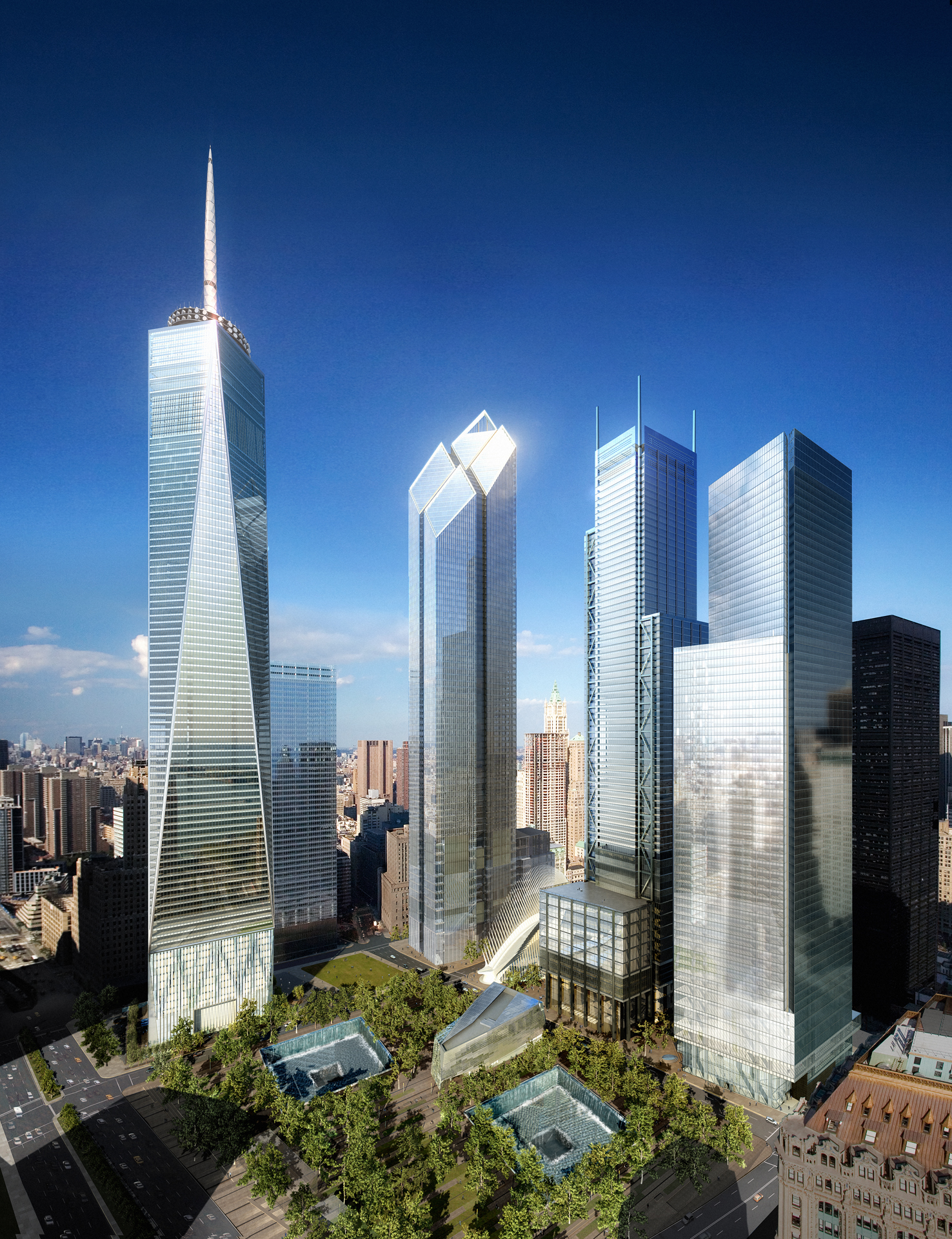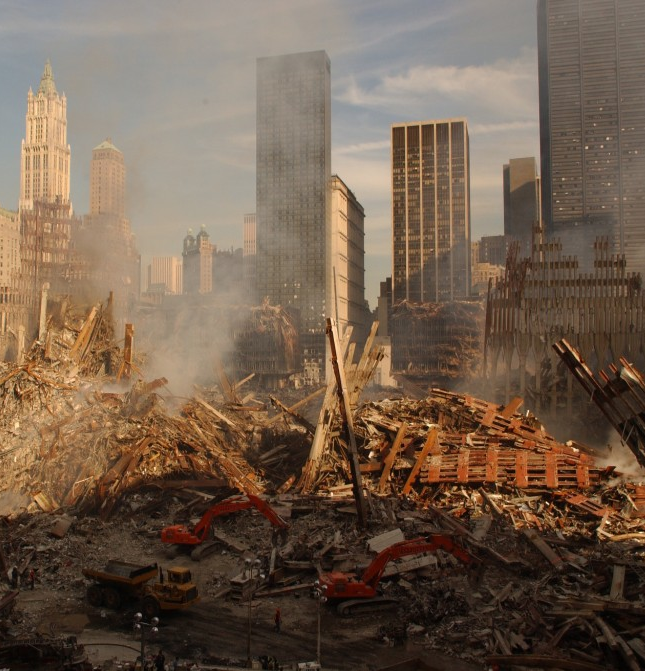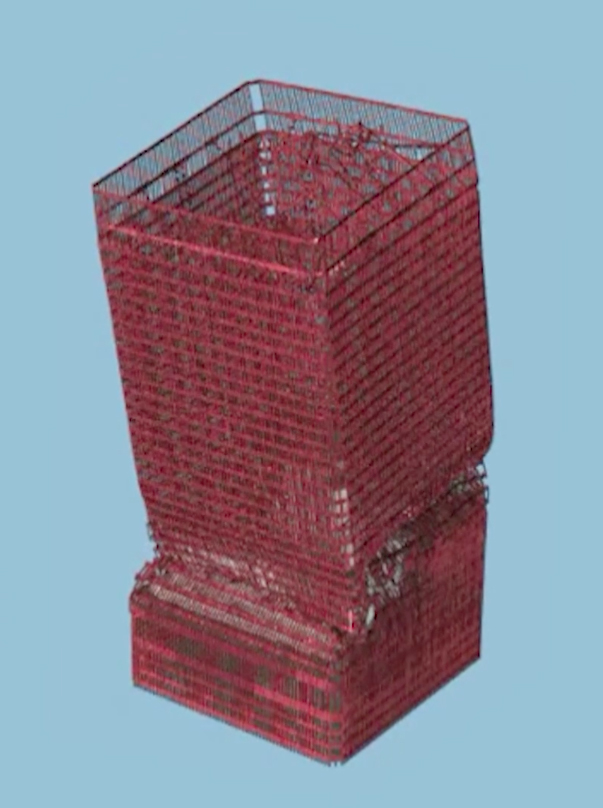
Remembering 9/11: Before, After, and Since
The Skyscraper Museum, which opened in 2004 at 39 Battery Place in Battery Park City, just blocks south of the World Trade Center site, will commemorate the twentieth anniversary of 9/11 with a series of virtual programs. From September through November, a series of webinars will bring together key figures closely associated with the recovery and rebuilding of the World Trade Center site to consider the history of the original Twin Towers and their destruction on 9/11, the aftermath of recovery and rebuilding at Ground Zero, and the cumulative changes to the built environment, community, and economy of lower Manhattan over the past two decades.
Noting that twenty years may seem a short time ago to many who experienced 9/11, but also represents the entire lifetime of young adults, the Museum’s programs will seek to both retrieve and document the in-the-moment memories of key figures closely associated with the recovery and rebuilding project, as well as invite their thoughts on how 9/11 changed New York – or, indeed, if it did?
The series of evening programs is organized around themes: the emergency response of the structural engineering profession; the work of planners and architects to create a meaningful master plan for the site that also accommodated commercial imperatives; residential development and commercial conversions downtown; and the lower Manhattan skyline two decades after 9/11. The intention is to focus on lesser-known aspects of the 9/11 story in order to deepen the history of the immediate aftermath and months of recovery. We will also engage the two-decade time frame, inviting key participants in the efforts of rebuilding to reflect on broad questions.
These programs extend the Museum's own more than two-decade focus on the history of the original World Trade Center and the rebuilding of Ground Zero that are collected on two projects on our website> World Trade Center Resources and the WTC Rebuilding Timeline.
SCHEDULE
Engineers’ Stories
The opening programs of our series will focus on “Engineers’ Stories,” which is an aspect of the history of 9/11 and its aftermath that has not been well documented. Engineers played a critical part in the efforts of first responders in the hours and days after the collapse of the Twin Towers into the apocalyptic scene of Ground Zero. Assessing the danger or relative safety of debris on the Pile and the stability of damaged structures surrounding the site was the job of engineers on whose judgments the lives of rescue workers depended.
In the months after the removal of the steel and clearing of material from the “bathtub,” the additional engineering analysis of the causes of the collapse of the towers began: that investigation consumed the next decade.
The programs will bring together engineers who devoted months or years to this work to remember and reflect on their experiences. Both panels will be moderated by Najib Abboud, a Managing Principal of Thornton Tomasetti, who led the team in the forensic analysis of the collapse of the towers.
The second program will take a view that deals in decades rather than days and which looks back to assess what has changed as a consequence of 9/11.


Ground Zero: The Cultural Component and the Commercial Imperative
Two design competitions determined the direction of the master plan at Ground Zero and the concept and position of the 9/11 memorial and museum. Less clear in their functions, locations, and funding were other cultural institutions awarded a potential place on the site. The cultural component was a key idea to both the rebuilding at Ground Zero and the recovery of lower Manhattan.
Meanwhile, the four skyscrapers that would replace the 9 million square feet of office space of the destroyed Twin Towers moved forward with a private investor-developer, Silverstein Properties, in a challenging commercial environment. Today three of the four towers are completed, while Tower 2 has stump foundations and an uncertain future.
The first of the pair of programs will analyze the development of Ground Zero as built, looking back on the continuously evolving plans for the cultural institutions and buildings that memorialize the tragedy of 9/11. Today the last of the Ground Zero sites defined by the Libeskind master plan, the Performing Arts Center, is nearing completion.
The second of the paired programs will assess the tensions between the commercial imperatives of the private office development, the economic context, and the pace of rebuilding and the constraints of politics on the city, state, and federal levels.

